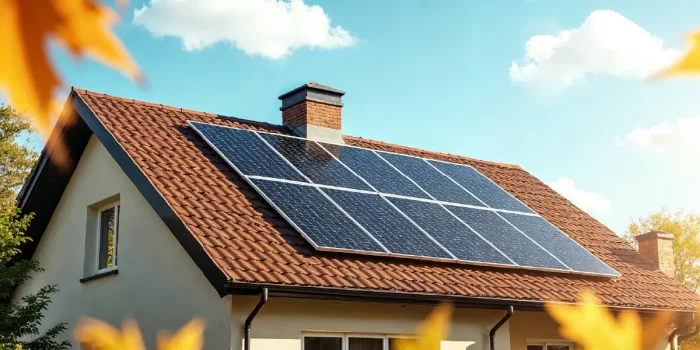Introduction
Global Energy Independence Day, observed on July 10, honors the birth of Nikola Tesla—a visionary whose innovations laid the groundwork for modern electricity. This day also calls global attention to the urgent need to reduce reliance on fossil fuels and embrace clean, renewable energy. As energy demand and climate risks escalate, this observance underscores critical goals: sustainability, energy security, environmental stewardship, and equitable access to power.
Can we really achieve clean energy independence—and how do our choices today shape that possibility?
Why Global Energy Independence Day Matters
Fossil fuels like oil, coal, and natural gas have long powered global economies, but this dependence comes at a cost. It exacerbates climate change, pollutes ecosystems, and creates energy insecurity, especially for countries reliant on imported fuel. Geopolitical instability and price volatility add layers of risk, leaving communities vulnerable to disruptions in transportation, food production, and electricity access.
Energy independence involves shifting toward domestic, renewable energy sources. It empowers countries to stabilize energy supply, reduce emissions, and protect critical infrastructure. For communities, it means greater access to affordable, reliable electricity—improving quality of life, health outcomes, and economic opportunities. In short, energy independence is not just a technological goal—it is a foundation for resilience and sustainability.
Clean Energy: The Path Forward
The transition to clean energy is not theoretical—it is already underway. Technologies like solar panels, wind turbines, hydropower, and geothermal systems are rapidly becoming mainstream. According to the International Renewable Energy Agency (IRENA), over 86% of new global power capacity added in 2023 came from renewables [1].
Why the momentum? Clean energy offers wide-reaching benefits:
- Zero greenhouse gas emissions, curbing climate impacts
- Cleaner air and water, leading to lower disease rates
- Energy equity, enabling access in off-grid regions
- Local job creation, boosting economic development
Renewables are now more affordable than ever. In many regions, solar and wind power cost less than fossil fuels. Advances in energy storage and grid integration continue to strengthen the reliability of renewable systems—addressing the longstanding challenge of intermittency.
Scientific Research and Technological Innovation
Robust scientific studies affirm that renewable energy can meet the world’s energy needs. A landmark model by Jacobson et al. shows that solar and wind energy could supply nearly 70% of global electricity by 2050, provided they are supported by efficient storage and distribution networks [2].
In tandem, digital tools are transforming how we manage energy systems. Machine learning and AI-driven grid forecasting enhance energy efficiency and reduce waste. Smart meters, demand-response systems, and blockchain-based energy transactions are building transparency and flexibility into decentralized power systems [3].
In rural and remote regions, microgrids powered by renewables are bringing electricity to communities for the first time—supporting clinics, schools, and agricultural production with sustainable power.
Global Policy and One Health Implications
The shift to clean energy also aligns with the One Health framework, which highlights the interconnectedness of human, animal, and environmental health. Burning fossil fuels contributes to respiratory and cardiovascular diseases, contaminates water supplies, and disrupts ecosystems. By replacing fossil fuels with renewables, we reduce exposure to harmful pollutants and stabilize natural systems [4].
Additionally, clean energy reduces climate-driven risks such as heatwaves, droughts, and extreme storms. These events not only endanger lives but also strain public health systems and threaten food security. Investing in clean energy is, therefore, a public health strategy and a climate adaptation measure.
Conclusion
Global Energy Independence Day serves as a timely reminder that our energy choices have far-reaching consequences. Clean, renewable energy is not just a sustainable alternative—it is a necessity for building a safer, healthier, and more equitable world.
By accelerating the transition away from fossil fuels and supporting innovation in energy systems, we can secure a future that honors Tesla’s legacy while safeguarding global well-being. On July 10, let this day inspire action toward a world powered by clean, resilient, and independent energy.
References
- International Renewable Energy Agency (2024) Renewable Capacity Statistics 2024. Available at: https://www.irena.org/publications/2024/Mar/Renewable-Capacity-Statistics-2024
- Jacobson, M.Z., Delucchi, M.A., Bazouin, G. et al. (2022) ‘Low-cost solutions to global warming, air pollution, and energy insecurity for 145 countries’, Renewable and Sustainable Energy Reviews, 149, p.111576.
- Zhou, K., Fu, C. and Yang, S. (2023) ‘Big data-driven smart energy systems: A review and future directions’, Renewable and Sustainable Energy Reviews, 122, p.109749.
- World Health Organization (2022) Air pollution and child health: Prescribing clean air. Available at: https://www.who.int/publications/i/item/air-pollution-and-child-health













